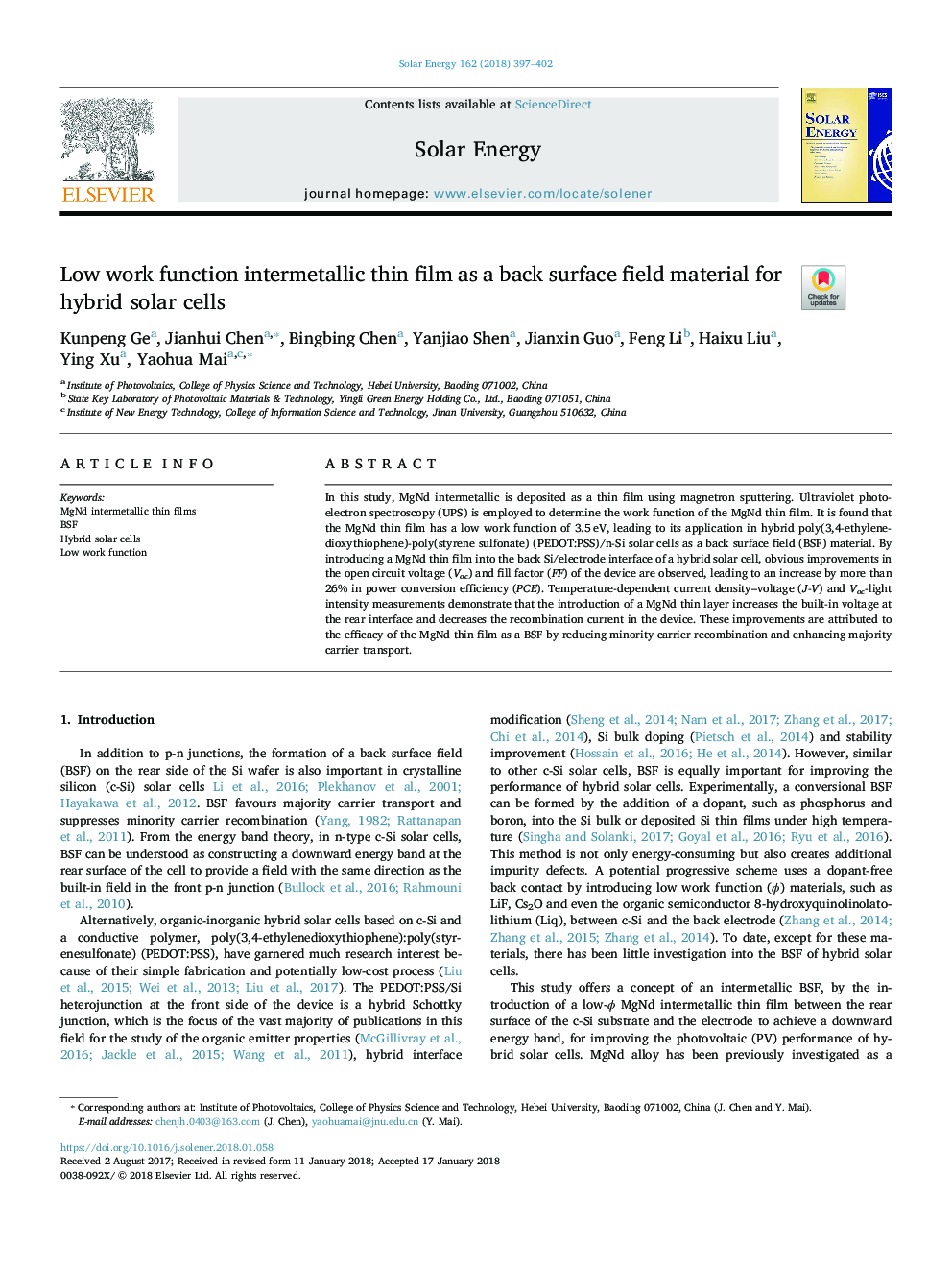| Article ID | Journal | Published Year | Pages | File Type |
|---|---|---|---|---|
| 7935719 | Solar Energy | 2018 | 6 Pages |
Abstract
In this study, MgNd intermetallic is deposited as a thin film using magnetron sputtering. Ultraviolet photoelectron spectroscopy (UPS) is employed to determine the work function of the MgNd thin film. It is found that the MgNd thin film has a low work function of 3.5â¯eV, leading to its application in hybrid poly(3,4-ethylenedioxythiophene)-poly(styrene sulfonate) (PEDOT:PSS)/n-Si solar cells as a back surface field (BSF) material. By introducing a MgNd thin film into the back Si/electrode interface of a hybrid solar cell, obvious improvements in the open circuit voltage (Voc) and fill factor (FF) of the device are observed, leading to an increase by more than 26% in power conversion efficiency (PCE). Temperature-dependent current density-voltage (J-V) and Voc-light intensity measurements demonstrate that the introduction of a MgNd thin layer increases the built-in voltage at the rear interface and decreases the recombination current in the device. These improvements are attributed to the efficacy of the MgNd thin film as a BSF by reducing minority carrier recombination and enhancing majority carrier transport.
Related Topics
Physical Sciences and Engineering
Energy
Renewable Energy, Sustainability and the Environment
Authors
Kunpeng Ge, Jianhui Chen, Bingbing Chen, Yanjiao Shen, Jianxin Guo, Feng Li, Haixu Liu, Ying Xu, Yaohua Mai,
